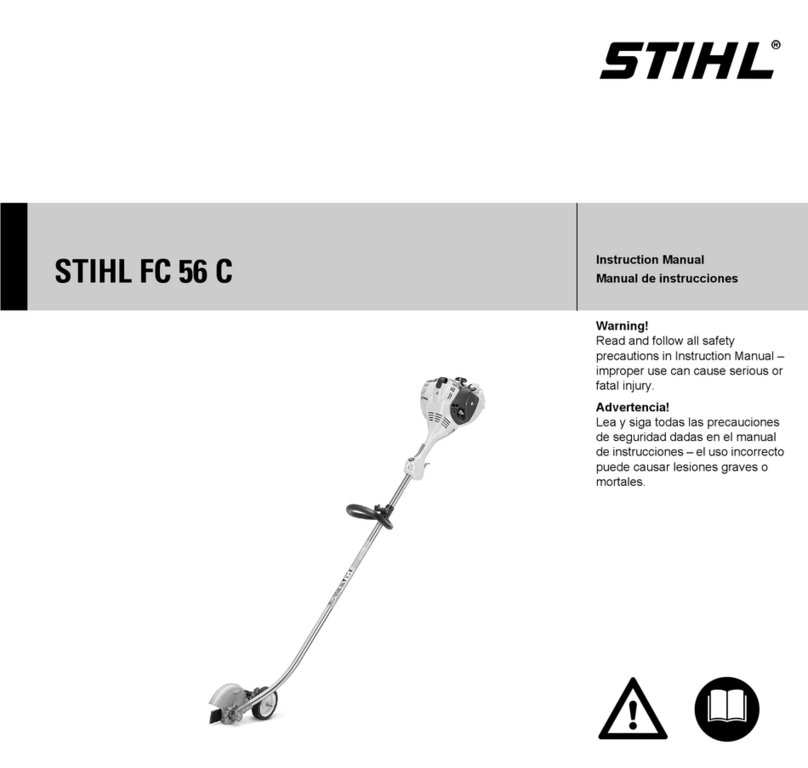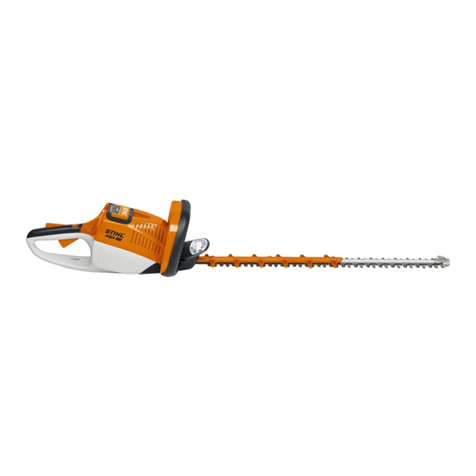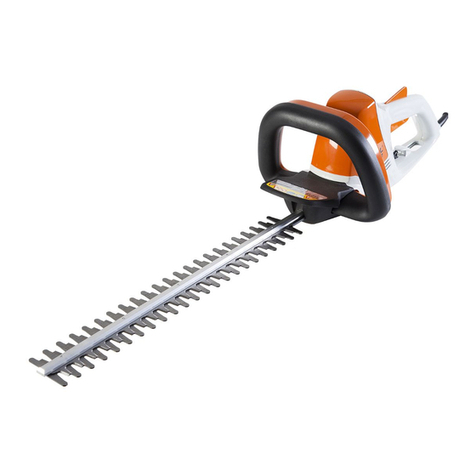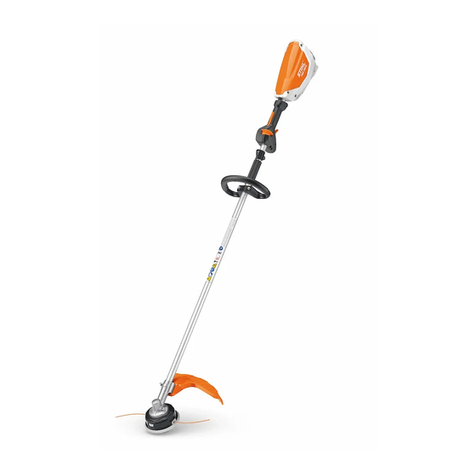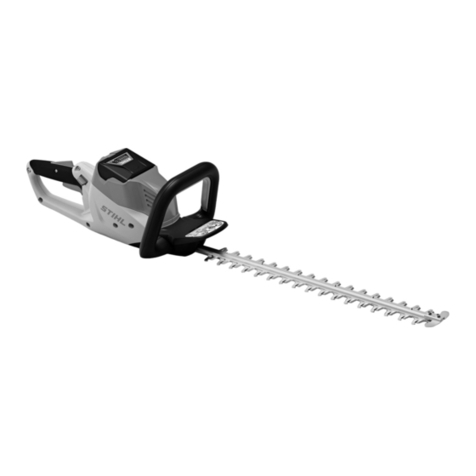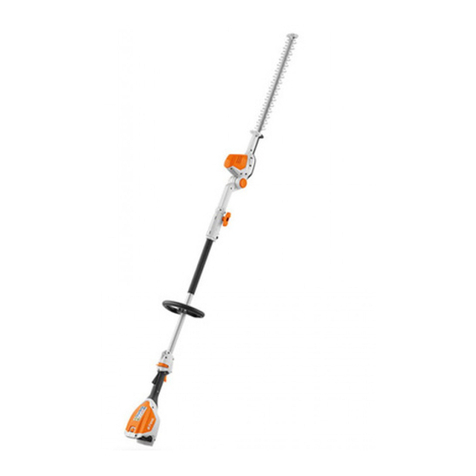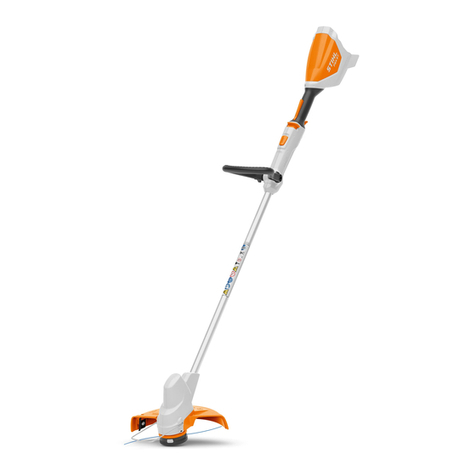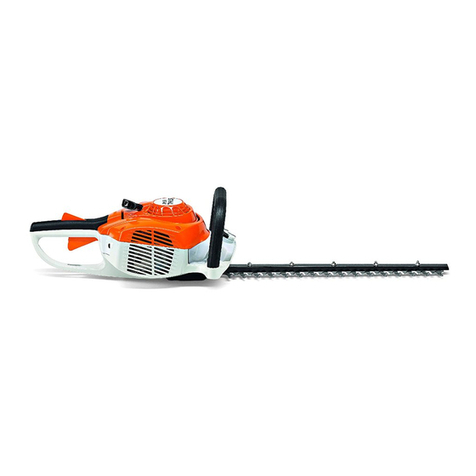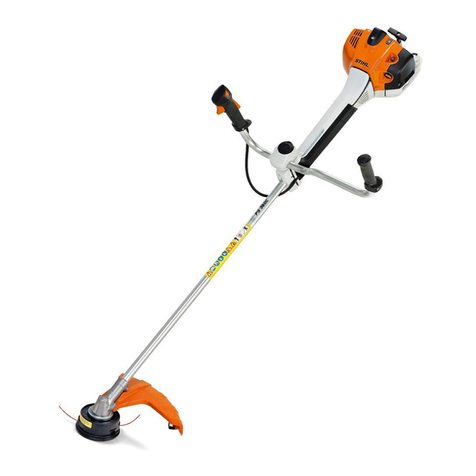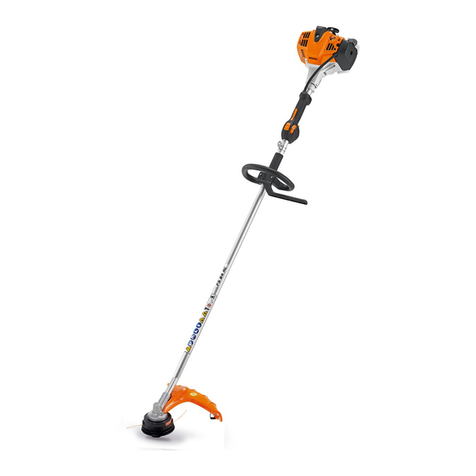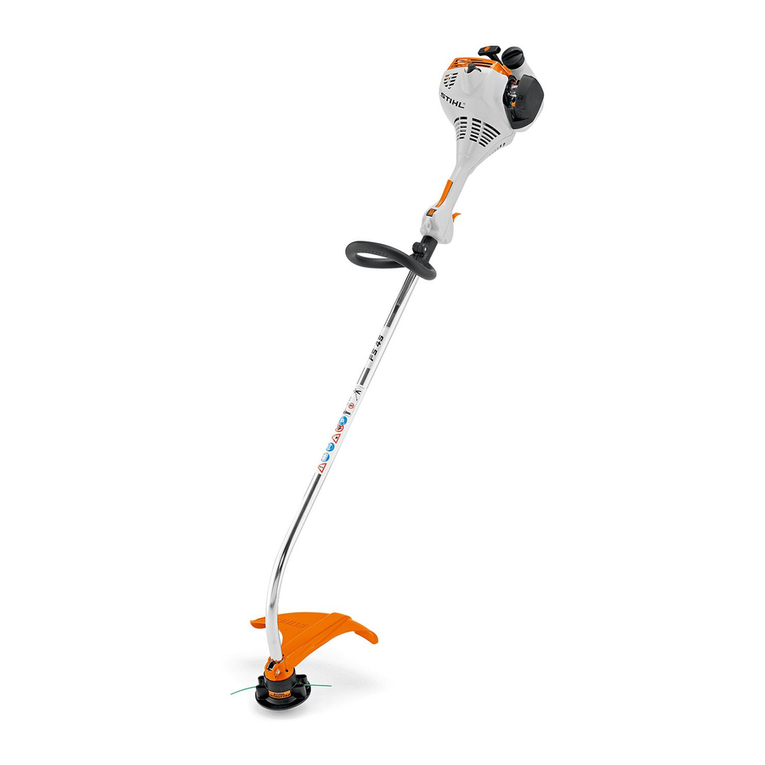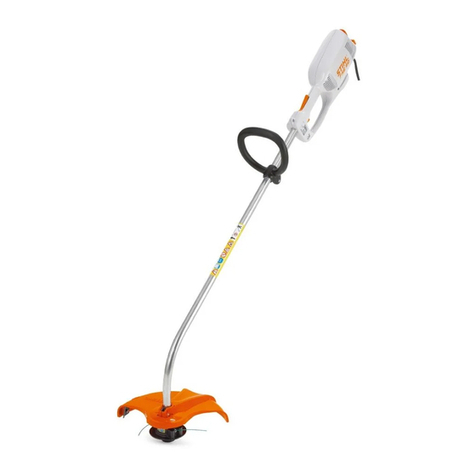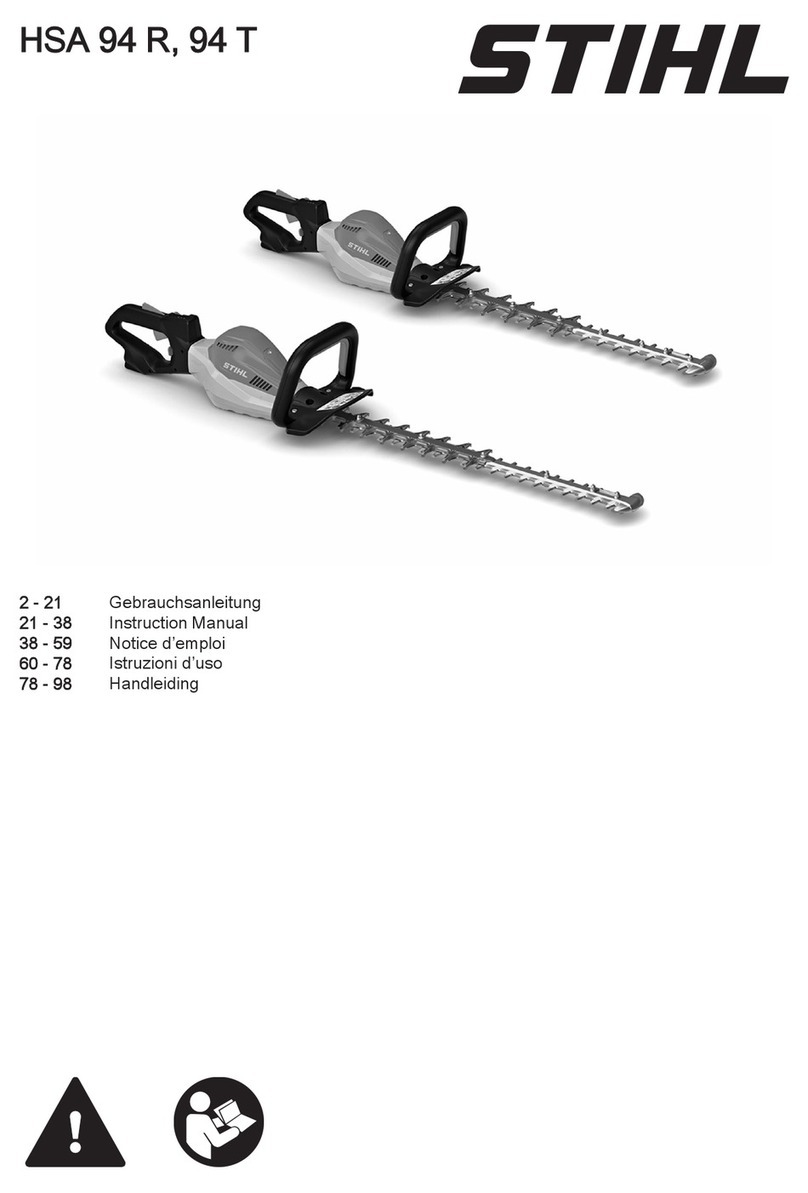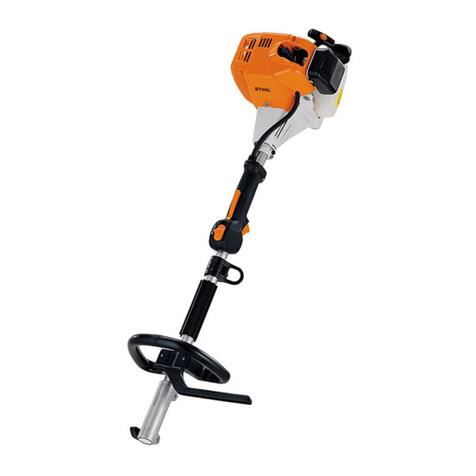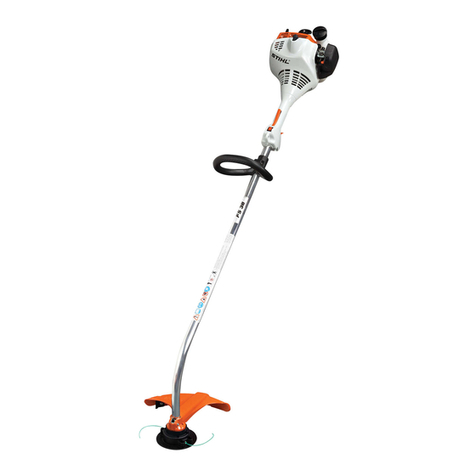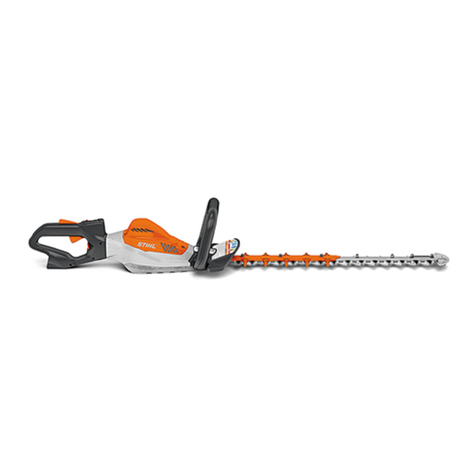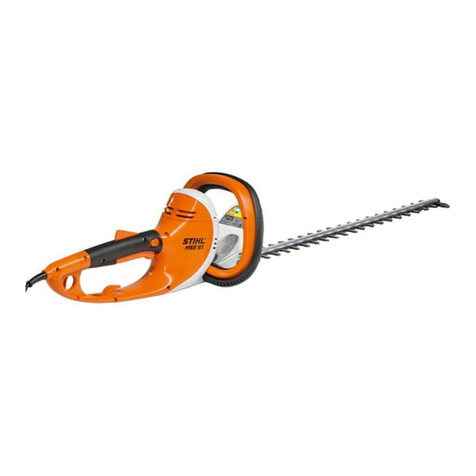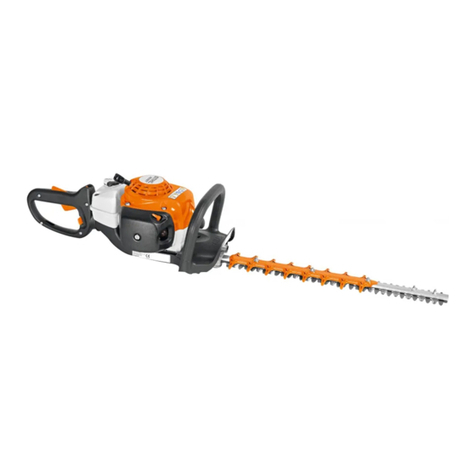
To reduce the risk of injury from moving blades
or falling cuttings, do not allow bystanders within
5 meters of your own position. This distance
must also be maintained in relation to objects
(vehicles, window panes) – risk of property dam‐
age!
Watch the cutting blades at all times – do not cut
areas of the hedge that you cannot see.
Be extremely careful when cutting tall hedges,
check the other side of the hedge before starting
work.
The drive motor is not waterproof. To
reduce the risk of a short circuit or
electrocution, never work with the
power tool in the rain or in wet or very
damp locations.
Do not leave the power tool outdoors in the rain.
Take special care in slippery conditions – damp,
snow, ice, on slopes or uneven ground!
Clear away fallen branches, scrub and cuttings.
Watch out for obstacles: tree stumps, roots – risk
of tripping or stumbling!
Make sure you always have good balance and
secure footing.
2.5.1 When working at heights:
–Always use a lift bucket
–never use the machine while standing on a
ladder
–never work on an insecure support
–Never use the machine with just one hand
Be particularly alert and cautious when wearing
hearing protection because your ability to hear
warnings (shouts, alarms, etc.) is restricted.
Take breaks when you start getting tired or feel‐
ing fatigue – risk of accidents!
Work calmly and carefully – in daylight conditions
and only when visibility is good. Proceed with
caution, do not put others in danger.
The gear head becomes hot during operation. To
reduce the risk of burn injury, do not touch the
gear housing!
If the machine is subjected to unusually high
loads for which it was not designed (e.g., heavy
impact or a fall), always check that it is in good
condition before continuing work - refer also to
the chapter "Before starting work". Make sure the
safety devices are working properly. Never use a
power tool that is no longer safe to operate. In
case of doubt, contact a dealer.
Inspect the hedge and work area to avoid dam‐
aging the cutting blades:
–Remove stones, rocks, pieces of metal and
other solid objects
–Make sure that no sand or stones get between
the cutter blades, e. g., when working close to
the ground
–Take particular care when cutting hedges next
to or against wire fences
Do not touch electric power lines – never cut
through electric power lines – risk of electrocu‐
tion!
Do not touch the cutting blades.while
the engine is running. If the cutting
blades become jammed by thick
branches or other obstructions,
switch off immediately and disconnect
the plug from the power supply before
attempting to free the blades.
If the hedge is very dusty or dirty, spray the cut‐
ting blades with STIHL resin solvent from time to
time during cutting. This will significantly reduce
blade friction, the aggressive effects of sap and
the build-up of dirt particles.
The dust that occurs during operation may be
harmful to health. Wear a dust mask in case of
dust formation.
If the power cord is damaged, imme‐
diately disconnect the plug from the
wall outlet to avoid the risk of electric
shock.
Never jerk the power cord to disconnect it from
the wall outlet. To unplug, grasp the plug, not the
cord.
Avoid damage to the power supply cord. Do not
drive over it, pinch or tug it.
Position the connecting and extension cords cor‐
rectly:
–Do not chafe on edges, pointed or sharp
objects
–don't trap or squeeze the cord in or under
doors or windows
2 Safety Precautions and Working Techniques English
0458-277-0121-B 5

